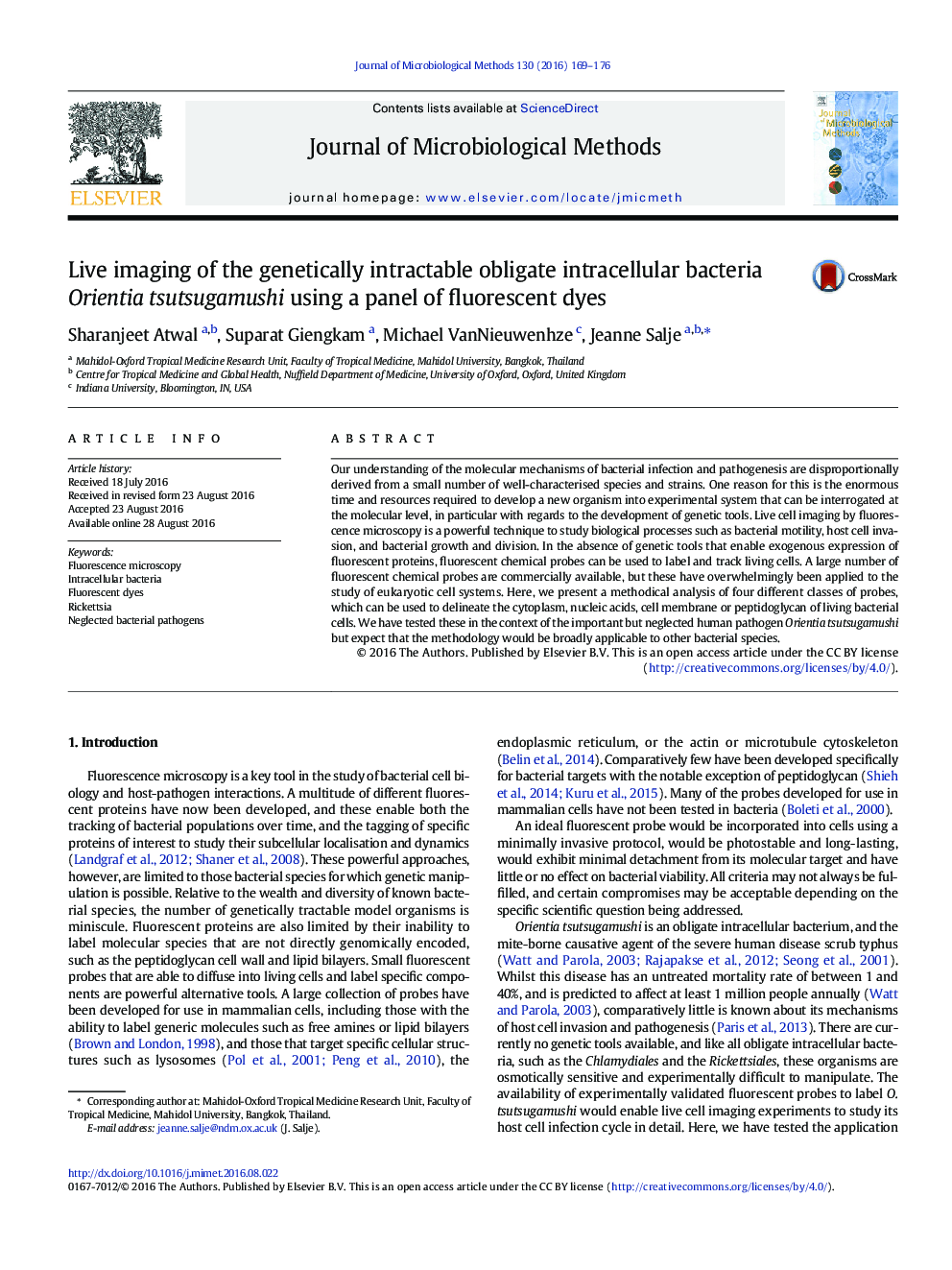| Article ID | Journal | Published Year | Pages | File Type |
|---|---|---|---|---|
| 8420733 | Journal of Microbiological Methods | 2016 | 8 Pages |
Abstract
Our understanding of the molecular mechanisms of bacterial infection and pathogenesis are disproportionally derived from a small number of well-characterised species and strains. One reason for this is the enormous time and resources required to develop a new organism into experimental system that can be interrogated at the molecular level, in particular with regards to the development of genetic tools. Live cell imaging by fluorescence microscopy is a powerful technique to study biological processes such as bacterial motility, host cell invasion, and bacterial growth and division. In the absence of genetic tools that enable exogenous expression of fluorescent proteins, fluorescent chemical probes can be used to label and track living cells. A large number of fluorescent chemical probes are commercially available, but these have overwhelmingly been applied to the study of eukaryotic cell systems. Here, we present a methodical analysis of four different classes of probes, which can be used to delineate the cytoplasm, nucleic acids, cell membrane or peptidoglycan of living bacterial cells. We have tested these in the context of the important but neglected human pathogen Orientia tsutsugamushi but expect that the methodology would be broadly applicable to other bacterial species.
Related Topics
Life Sciences
Biochemistry, Genetics and Molecular Biology
Biotechnology
Authors
Sharanjeet Atwal, Suparat Giengkam, Michael VanNieuwenhze, Jeanne Salje,
